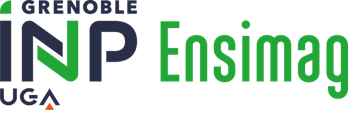Number of hours
- Lectures 36.0
- Projects -
- Tutorials -
- Internship -
- Laboratory works -
- Written tests -
ECTS
ECTS 6.0
Goal(s)
Acquire knowledge on the state of the art of novel interaction techniques, and its scientifically proven benefits.
Acquire knowledge on the bottlenecks in current novel interaction techniques.
Be able to design new forms of interaction richer and more adapted to some contexts of use than the current interaction
Celine COUTRIX
Content(s)
This course presents an overview of innovative interaction techniques, in the context of Augmented and Virtual Reality. The course covers —non-exhaustively— techniques in the areas of 3D interaction, Tangible Interaction, Multimodal Interaction, Mobile Interaction, Touch, pressure and gestural Interaction, Shape-changing and adaptive interfaces, plastic & incentive interfaces.
Lectures
Definition of novel interaction domains, and position regarding other interaction paradigms;
Benefits and drawbacks, and the scientific investigation of their grand challenges;
Case study, Examples
Design frameworks;
Prototyping & development;
Project
Students work in groups of 2 during the whole semester on an HCI study. They chose an HCI problem of their choice (moderated by the professors), analyze the problem, propose a new interaction, prototype and evaluate it, and they present their work to the class at the end of the semester.
Session 1: Project (100%) Session 2: The project grade is kept (50%) + oral exam 30min (50%)
The exam is given in english only 
The course exists in the following branches:
- Curriculum - Master in Computer Science - Semester 9 (this course is given in english only
 )
)
Course ID : WMM9MO66
Course language(s): 
You can find this course among all other courses.
Matthew Turk. Multimodal interaction: A review. Pattern Recognition Letters, Volume 36, 2014, Pages 189-195, ISSN 0167-8655.



